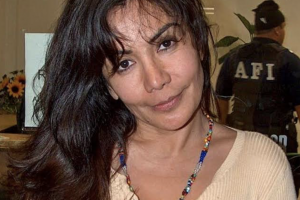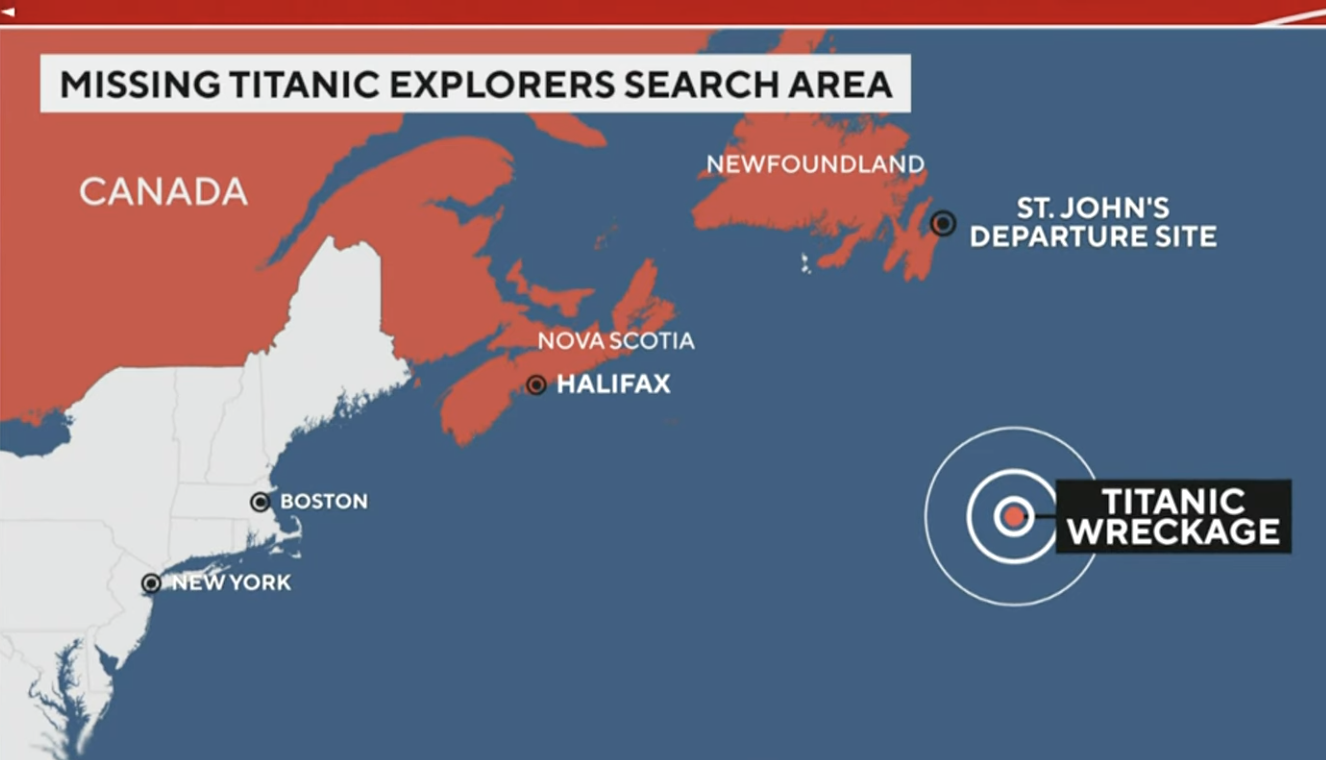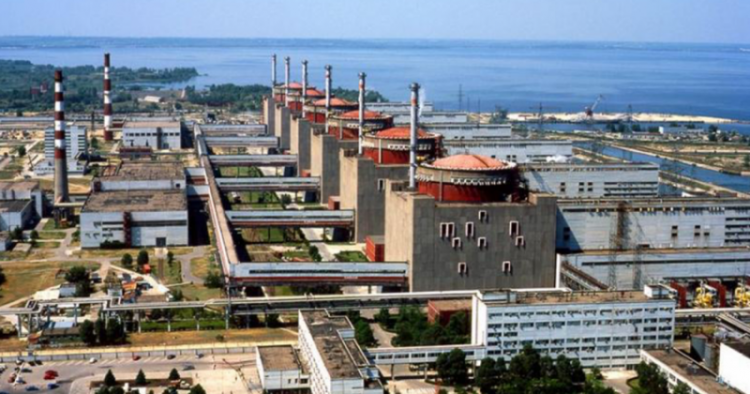News
Who Are the Top 4 Most Dangerous Female Cartel Bosses?

Table of Contents
Who Are the Most Dangerous Female Cartel Bosses?
The world of organized crime is often associated with male leaders and bosses. However, there are a few female cartel bosses who have made a name for themselves in this dangerous and ruthless industry.
These women have proven themselves to be just as cunning and ruthless as their male counterparts, and they have earned the respect and fear of those around them.
From Griselda Blanco to Enedina Arellano Félix, these female bosses have made a significant impact on the world of drug trafficking and organized crime.
In this article, we will explore the most dangerous female cartel bosses and their rise to power, as well as their tactics and methods of operation.
#1. Griselda Blanco

Griselda Blanco was not only a ruthless cartel boss but also a pioneer in the world of drug trafficking. She is often referred to as the “Godmother of Cocaine” due to her significant role in the Medellin Cartel, one of the most powerful drug cartels in history.
Blanco was born in Cartagena, Colombia, in 1943 and began her career in organized crime as a child, stealing and selling items to make ends meet.
In the 1970s, Blanco moved to the United States, where she continued her involvement in drug trafficking.
She quickly gained a reputation for her brutal tactics, which included ordering the murders of anyone who crossed her. Blanco was known for her cold-bloodedness and her ability to eliminate anyone who posed a threat to her or her business.
She was involved in various illegal activities, including drug trafficking, money laundering, and murder.
Despite her success, Blanco’s reign came to an end in 1985 when she was arrested in California. She was charged with multiple drug-related offenses, including trafficking cocaine into the United States. Blanco was eventually sentenced to 20 years in prison, but her involvement in organized crime did not end there.
While in prison, she continued to operate her drug empire through her son, Michael Corleone Blanco.
Griselda Blanco’s legacy as a powerful and dangerous female cartel boss has had a lasting impact on the world of organized crime.
She proved that women could be just as ruthless and successful as men in this industry, and her tactics and methods of operation have influenced many other female cartel bosses who followed in her footsteps.
Despite her eventual capture and imprisonment, Blanco’s name remains synonymous with drug trafficking and organized crime, and she continues to be a fascinating and controversial figure in the world of true crime.
#2. Sandra Ávila Beltrán

Sandra Ávila Beltrán, also known as the “Queen of the Pacific,” was one of the most prominent female cartel bosses in Mexico.
Born in Baja California in 1960, Ávila Beltrán was a key figure in the Sinaloa Cartel, one of the largest and most powerful drug trafficking organizations in the world.
Ávila Beltrán was known for her business acumen and her ability to evade law enforcement. She was involved in various aspects of the drug trade, including trafficking, money laundering, and bribery. She was also known for her luxury lifestyle, often flaunting her wealth and expensive possessions.
Despite her success, Ávila Beltrán’s luck eventually ran out. In 2007, she was arrested by Mexican authorities in connection to a large-scale drug trafficking operation.
She was eventually extradited to the United States in 2012, where she was charged with conspiracy to traffic cocaine. Ávila Beltrán pleaded guilty to the charges and was sentenced to 70 months in prison.
Ávila Beltrán’s arrest was a significant blow to the Sinaloa Cartel, which had relied heavily on her expertise and connections. However, her influence and legacy have continued to inspire other female cartel bosses, who have sought to follow in her footsteps.
Despite her involvement in the drug trade, Ávila Beltrán has been something of a cultural icon in Mexico, with numerous songs and books written about her life and exploits.
Her nickname, the “Queen of the Pacific,” has become synonymous with power, wealth, and danger, and she remains a fascinating figure in the world of organized crime.
#3. Maria Jimenez Rodriguez

Maria Jimenez Rodriguez, also known as “La Tosca,” was a feared female cartel boss and a key leader in the Gulf Cartel, one of the largest and most powerful drug trafficking organizations in Mexico.
Rodriguez was known for her involvement in various criminal activities, including drug trafficking, extortion, and kidnapping.
Rodriguez’s nickname, “La Tosca,” referred to her tough and ruthless personality. She was not afraid to use violence to eliminate any potential threats to her power or to protect her business interests.
Her tactics included kidnapping and extortion, which she used to maintain control over various territories and business ventures.
Despite her success, Rodriguez’s criminal career eventually came to an end. In 2011, she was arrested by Mexican authorities in connection to various criminal offenses, including drug trafficking and money laundering.
Rodriguez was eventually sentenced to 43 years in prison, where she remains to this day.
Rodriguez’s arrest was a significant victory for law enforcement, as she was one of the most powerful female cartel bosses in Mexico at the time. However, her influence and legacy continue to inspire other female cartel bosses, who have sought to fill the void left by her arrest.
Maria Jimenez Rodriguez’s life and career highlight the dangerous and brutal nature of the world of organized crime.
Despite the risks and the threat of imprisonment, many individuals, including women, are drawn to this industry by the promise of wealth and power.
While Rodriguez’s reign as a cartel boss may be over, her legacy and influence on the world of organized crime will continue to be felt for years to come.
#4. Enedina Arellano Félix

Enedina Arellano Félix is a notorious figure in the world of drug trafficking and organized crime.
She was a member of the Arellano Félix Cartel, one of the most powerful drug trafficking organizations in Mexico, and was the sister of several of the cartel’s leaders.
Arellano Félix was known for her involvement in money laundering and drug trafficking, and she was considered to be one of the most dangerous female cartel bosses in the world.
Despite being a key member of the Arellano Félix Cartel, Arellano Félix managed to evade law enforcement for years. She used her connections and her skills in money laundering to stay one step ahead of authorities. She was also known for her cunning and her ability to manipulate those around her.
However, in recent years, Arellano Félix’s luck has run out. In 2007, she was arrested by Mexican authorities in connection to various criminal offenses, including drug trafficking and money laundering. However, due to lack of evidence, she was released from custody.
Despite the arrest, Arellano Félix remained a major player in the world of organized crime.
She continued to operate her drug empire from behind the scenes and managed to evade law enforcement for years. As of now, Arellano Félix remains at large and is still considered to be one of the most dangerous female cartel bosses in the world.
Arellano Félix’s life and career highlight the dangerous and ruthless nature of the world of organized crime.
Despite the risks and the threat of imprisonment, many individuals, including women, are drawn to this industry by the promise of wealth and power.
While Arellano Félix may still be at large, law enforcement agencies around the world continue to work tirelessly to bring her and other dangerous cartel bosses to justice.
How Do Female Cartel Bosses Operate?
Female cartel bosses often use their gender to their advantage, as they are less likely to draw attention from law enforcement. They are also known for their ability to use their charm and manipulation skills to get what they want.
Many female cartel bosses have been involved in the drug trade since a young age, often starting out as couriers or drug mules. They work their way up the ranks through loyalty and ruthlessness, often using violence to eliminate any potential threats.
Why Are Female Cartel Bosses So Dangerous?
Female cartel bosses are just as dangerous as their male counterparts, if not more so.
They are often underestimated by law enforcement, which gives them a strategic advantage. They are also known for their cunning and their ability to manipulate those around them.
Female cartel bosses are often more ruthless than male bosses, as they have more to prove in a male-dominated industry. They are not afraid to use violence to maintain their power and eliminate any potential threats.
Conclusion
In conclusion, female cartel bosses are a force to be reckoned with in the world of organized crime. From Griselda Blanco to Enedina Arellano Félix, these women have proven themselves to be just as dangerous and ruthless as their male counterparts.
They use their gender to their advantage and are skilled manipulators and strategists.
Law enforcement agencies must be vigilant in their efforts to track down and bring these female bosses to justice.
FAQs
-
Are female cartel bosses common?
No, female cartel bosses are not common, but they do exist.
-
How do female cartel bosses rise to power?
Female cartel bosses often start out as couriers or drug mules and work their way up the ranks through loyalty and ruthlessness.
-
Are female cartel bosses more dangerous than male bosses?
Female cartel bosses can be just as dangerous as male bosses, if not more so.
-
Why are female cartel bosses often overlooked?
Female cartel bosses are often overlooked because the world of organized crime is still heavily male-dominated. Law enforcement agencies are more focused on male cartel leaders, making it easier for female bosses to operate under the radar.
-
Are female cartel bosses involved in all aspects of drug trafficking?
Yes, female cartel bosses are involved in all aspects of drug trafficking, from production to distribution.
-
How do female cartel bosses avoid being caught by law enforcement?
Female cartel bosses often use their gender to their advantage, as they are less likely to draw attention from law enforcement. They also use sophisticated methods to avoid detection, such as encrypted communication and secret codes.
- How are female cartel bosses viewed within their organizations?
Female cartel bosses are viewed with respect and fear within their organizations. They are often more ruthless than male bosses and are not afraid to use violence to maintain their power.
Fact Check
We strive to provide the latest valuable information for our readers with accuracy and fairness.
If you would like to add to this post or advertise with us, don’t hesitate to contact us. If you see something that doesn’t look right, contact us!
News
Unraveling the Tragic Titanic Submarine Implosion – The Fatal Voyage

Table of Contents
Unraveling the Tragic Titanic Submarine Implosion: A Father’s Day Dive Ends in Desolation
Reluctant Teen’s Fatal Voyage Sheds New Light on Titanic Submarine Disaster
In an event that has sent shockwaves across the globe, the world grieves the tragic loss of five lives in the catastrophic implosion of the OceanGate submersible.
Among the victims were Pakistani businessman Shahzada Dawood and his 19-year-old son Suleman Dawood, who embarked on the ill-fated journey on the occasion of Father’s Day.

Their story, as heart-wrenching as it is, offers a unique perspective on the disaster, eliciting questions about the inherent risks of such ventures and the motivations that drive us towards them.
Shahzada Dawood and Son’s Fateful Journey
Suleman Dawood, a 19-year-old university student, was terrified about the voyage to the site of the infamous 1912 shipwreck.

He joined the crew not out of his own desire, but to please his father, Shahzada Dawood, who held a passion for the historic maritime disaster.
The father-son duo were among the five individuals who tragically lost their lives in an instant when the Titanic submarine suffered a catastrophic implosion, approximately 1,600ft from the bow of the Titanic.
The Emotional Toll of the Disaster
Azmeh Dawood, the older sister of Shahzada Dawood, shared heart-rending details about her nephew’s apprehensions before the trip.

Suleman was ‘terrified’ but felt compelled to accompany his father, who was fervently interested in the Titanic shipwreck. The heartrending account of Suleman’s aunt underscores the emotional toll this incident has taken on the bereaved families.
The Titanic Submarine Disaster
This devastating event raises multiple questions about the safety and future of deep-sea exploration. The OceanGate submersible’s tragic implosion has had far-reaching implications, and the impact extends beyond the immediate loss of life.

With investigations ongoing, the incident serves as a grim reminder of the dangers lurking in the ocean’s depths, prompting a reevaluation of the risks involved in such endeavors.
Conclusion
The Titanic submarine implosion has united the world in mourning, with the Dawood family’s story adding a deeply personal dimension to the tragedy.
It forces us to question the boundaries of adventure and the price we’re willing to pay for curiosity and exploration. As we continue to delve into this disaster, it’s crucial that we remember the lives lost and the lessons to be learned from this tragic event.
Source: Daily Mail Online
News
Elon Musk Forewarns Economic Challenges, Admits Tesla’s Vulnerability

Table of Contents
Elon Musk Forewarns Economic Challenges, Admits Tesla’s Vulnerability
Elon Musk, the audacious entrepreneur and the face of futuristic businesses like SpaceX and Tesla, recently issued a stark warning about impending economic challenges.
He also admitted that Tesla, his electric vehicle and clean energy company, may not be immune to these challenges.
Musk’s Stark Economic Warning
During a recent statement, Musk expressed concerns about the global economy’s trajectory (REF 1). His warning comes at a time when financial markets worldwide are experiencing a tumultuous period, with investors increasingly concerned about inflation and tightening monetary policies.
“Given the current economic climate, businesses, no matter how robust, should be prepared for potential challenges,” Musk warned.
Tesla’s Position in the Predicted Economic Downturn
Musk further confessed that Tesla is not immune to these impending economic woes. Despite being one of the leading electric vehicle manufacturers with a strong market presence (REF 2), Tesla, like other businesses, could face financial turbulence.
In his statement, Musk acknowledged, “Tesla has weathered many storms, but we’re not invincible. Our resilience will be tested in the face of these economic challenges.”
Tesla’s Performance Amid Economic Fluctuations
Tesla has indeed shown an impressive ability to navigate through economic fluctuations. The company’s stock value, despite periodic drops, has generally trended upward since its inception (REF 3). However, the prospect of a harsh economic environment may test Tesla’s resilience in ways it has not yet faced.
Preparing for the Future
Although Musk’s comments may unsettle some, they also underscore the need for economic resilience. Businesses and individuals alike should heed Musk’s warning and prepare for potential financial difficulties.
As Musk himself has shown through his various ventures, foresight and innovation are key in weathering any economic storm (REF 4).
Conclusion
Elon Musk’s economic warning is a sobering reminder of the uncertain times ahead. His candid admission of Tesla’s vulnerability despite its strength is a call for prudence in an increasingly volatile economic climate.
While the future remains unpredictable, one thing is clear: resilience and innovation will be crucial in navigating the challenges that lie ahead.
References:
REF 1: Elon Musk’s Previous Economic Predictions
REF 2: Tesla’s Global Market Presence
REF 3: Tesla’s Stock Performance Over Time
REF 4: Musk’s Innovative Ventures
News
Russia-Ukraine War: 5 U.N. Nuclear Inspectors Remains

Table of Contents
5 U.N. Nuclear Inspectors Remain at Embattled Nuclear Plant in in Zaporizhzhia, Russia -Ukraine War Zone: Humanitarian Crisis Grows
The war in Ukraine has continued to rage, with reports of heavy shelling near a nuclear plant in Zaporizhzhia, that is currently under the control of Russian-backed forces.
Five international nuclear inspectors remain at the plant, despite calls from Ukrainian officials for their evacuation.
The plant has reportedly deployed emergency backup measures after it was struck by shelling, and Russian officials have prevented independent journalists from observing the I.A.E.A. mission.
While there have been some improvements in U.N. security since the nuclear inspectors were first placed in danger, the humanitarian crisis continues to grow as more people are displaced by the conflict.
For the nuclear agency, navigating a combat zone in Ukraine is likely quite challenging – hopefully, these inspectors will be able to make some headway in their mission and help secure the plant’s safety.
The State of the War
Amidst the ongoing military conflict in the Russian-Ukrainian nuclear plant region, the State Department has called on UN Security Council member states to provide additional security for the nuclear inspectors.
If not, Washington has threatened to move forward with its plans to suspend all nuclear cooperation with Russia. This raises serious concerns about the safety and well-being of these inspectors, who have been “exiled” by Russia and Ukraine without proper authorization from the United Nations or international bodies such as NATO or OSCE.

This situation is further complicated by the continued military activity in the region. If this situation does not improve soon, the five nuclear inspectors at the plant may not be safe anywhere.
Here’s what we know:
There has been a recent escalation of the conflict in eastern Ukraine, with reports of increased fighting and shelling. This has led to concerns over the humanitarian crisis unfolding as a result of the violence.
Five inspectors from the United Nations’ International Atomic Energy Agency (IAEA) are still stationed at a nuclear plant in Russia-Ukraine war zone, despite calls for their safety by international organizations.
The IAEA has warned that this situation is “extremely dangerous.” The agency has called for an immediate ceasefire and for all sides to pull back their forces from the site. If not met, this could lead to further damage and casualties at what is already considered one of Europe’s most volatile nuclear sites.
War in Ukraine: What you need to know
There’s no doubt that the war in Ukraine is having a serious impact on civilians. As of now, 5 nuclear inspectors are still stranded in the war-torn country – risking their lives every day.
The conflict has also killed more than 10,000 people and displaced millions of others.
Adding to this misery is the fact that there is no ceasefire in place and both sides continue to bomb each other’s territories indiscriminately.
Russia has accused Ukranian government forces of shelling civilian areas which Kiev denies vehemently. As things stand, it seems like an endless cycle of violence with no end in sight!
A group of United Nations (U.N.) After traveling through a contested region of southeast Ukraine that was under fire from mortar shelling and small arms fire, nuclear experts conducted an initial inspection at the troubled Zaporizhzhia nuclear power plant on Thursday.
Rafael Grossi, the director general of the International Atomic Energy Agency, said in a video message that he had just finished his first tour of the key areas that they wanted to see at the plant.
“I have just completed a first tour of the key areas that we wanted to see,” Grossi said. “Of course, there is more that needs to be done. My entire team will be staying.”
According to Grossi, the purpose of his multiday inspection was to establish a permanent monitoring mission at the plant and evaluate the security situation at the facility.
After his departure, it is not clear how extensive his team will still have access to the information.
Although Russian forces maintain physical control of the facility, Ukrainian engineers are responsible for its day-to-day operations.
It has been subjected to a terrifying assortment of artillery barrages, uncontrolled fires, and power outages over the past few months, with a skeleton crew of workers sometimes being held at gunpoint.
Grossi was escorted to the plant in a procession of armored vehicles, and he remained there for a number of hours before leaving.
According to the Ukraine’s nuclear power company, Energoatom, he left behind a core team consisting of five experts to continue the inspection until Saturday.
According to the power company, the International Atomic Energy Agency (IAEA) group entered the plant after shelling by Russian troops forced the shutdown of a reactor. During the process, a backup power line was severely damaged.
The mission of the team is to interview workers, who Ukrainian officials claim have been subjected to intimidation and abuse at the hands of the Russian military.
The team will also check on the plant’s safety systems, review the damage done to the complex, and check on the plant’s safety systems. The plant is receiving maintenance from more than one thousand employees, which is roughly ten percent of its normal workforce.
In order to maintain a stable temperature, the plant’s six nuclear reactors require a continuous supply of electricity.
According to Ukrainian officials, the facility was disconnected from its power source last week as a result of shelling and a fire, and as a result, the facility required the use of emergency generators.
Nuclear industry professionals have high hopes that the IAEA mission will result in the development of a backup system that is more advanced than the existing fleet of diesel generators, which can only operate for a predetermined period of time.
Since Russian forces initially took control of the plant in March, Grossi had been trying to arrange a visit to the facility ever since then.
A route that went through Russian-occupied Crimea was deemed by Ukraine to be an affront to the country’s independence, so the Ukrainian government turned down a proposal to take that route.
After getting past those political roadblocks, the visit was almost canceled on Thursday due to shelling that occurred near the route that was supposed to be taken.
Grossi admitted that there was “increased military activity,” but he stated that the mission was too important to give up on.
He stated that despite having made it this far, they would not be giving up.
According to the International Atomic Energy Agency, which published images of the halted convoy, he and his team were detained at a checkpoint in Ukraine for more than three hours while on their way there.
A spokesman for the IAEA stated that Grossi, who gave off the impression of being visibly irritated, “personally negotiated with Ukrainian military authorities to be able to proceed.”
Despite the fact that both Russia and Ukraine gave the IAEA team their assurances of safety, there has not been a cease-fire agreed upon between the two countries.
According to Ukraine, Russia was putting the path leading to the plant in danger. Both parties have been quick to accuse the other of shelling the facility on multiple occasions.
Officials from Ukraine have issued a demand to Russian forces that they withdraw from the plant. These soldiers have stated that they are there to protect the area and have therefore refused to leave.
Aggression against Ukraine
The situation in Ukraine is further complicated by Russia’s refusal to allow international journalists into the region. This has only made matters worse as information about what’s happening on the ground is severely restricted.
Meanwhile, the humanitarian crisis has only grown as a result of aggression – more people are fleeing to safety, and food and water are becoming scarce.
The UN nuclear inspectors remain in danger, despite an aggressive Russian campaign to drive them out. If anything happens to them or they report any findings that go against Moscow’s interests, things could quickly get out of hand.
Emergency Humanitarian Appeal
The nuclear plant in Russia’s Far East that was the target of an attempted cyberattack has led to fears of a humanitarian crisis unfolding. As more than 5,000 people have been evacuated from the area, there are now fears of a potential freeze-out happening as winter sets in.
With power out and food and medical supplies running low, many fear for their safety and that of those still stranded. The U.N.’s International Atomic Energy Agency (IAEA) has said that while radiation levels have decreased at the plant there is still “high risk” involved owing to its ongoing condition.
Consequently, international aid efforts are needed to continue supporting those affected by this terrifying incident.
Protection of civilians is a priority
The primary responsibility of the UN remains to protect civilians, and they will not stop until this is fulfilled.
In line with their mandate, representatives from the United Nations are currently stationed in the embattled nuclear plant in Russia-Ukraine war zone.
Despite increasing reports of human rights abuses and civilian casualties, they remain there as a symbol of peace and protection for all people involved.
Europe facing its biggest refugee crisis since the Second World War
Europe is facing its biggest refugee crisis since the Second World War and it’s not looking getting any better anytime soon.
The U.N. has warned of a “humanitarian catastrophe” should the situation continue to deteriorate, while reports of human rights abuses are continuing to surface both inside and outside of the war zone in Syria.
As of now, more than 1 million people have been displaced in Ukraine – with over 300,000 seeking refuge in neighbouring countries.
In Germany alone, officials expect up to 1 million asylum seekers this year – which could put an immense strain on social services and infrastructure alike.
Nuclear facilities
There has been international outcry over the nuclear plant in Russia-Ukraine war zone that remains operational despite numerous calls for its immediate evacuation.
The plant has been identified as a major source of radiation, and even Five UN nuclear inspectors are still present there. This puts them at great risk of exposure to radiation.
The humanitarian crisis is worsening due to the fact that people are unable to access food, water or medical supplies due to the presence of military forces in the area. This has resulted in an increase in cases of diseases like malnutrition and dehydration among those living near the nuclear plant.
Food security
Food security is a pressing issue in the current state of war in Eastern Ukraine. As peace has not yet been restored, many civilians are still struggling to find enough to eat. This has led to a humanitarian crisis as people are forced to flee their homes and face difficult conditions on the ground.
Conditions continue to deteriorate, with more and more civilians being displaced by violence.
The lack of food security is also looming large as international aid agencies struggle put enough food into the hands of those in need.
With no end in sight for this conflict, it’s important that all stakeholders work together towards ensuring that everybody affected by it can live safe and sustainable lives.
Ukraine backgrounder
Ukraine is currently mired in a conflict with Russian-backed separatists. The U.N.’s nuclear inspectors have been prevented from entering the area for over a month now, exacerbating the humanitarian crisis.
Close to 5,000 people have fled the conflict zone into neighboring countries – most of them civilians. A ceasefire between Ukraine and Russian-backed separatists has not held, with several violations reported in recent days.
The inspectors braved shelling as they crossed the front line between Ukrainian and Russian forces.
The international team of nuclear inspectors that was sent to Ukraine to carry out their work is now facing a humanitarian crisis.
The team of five, including a Canadian, arrived in the war zone to carry out their mission, but they are now blockaded by Ukrainian forces at the nuclear plant. If they do not safely leave soon, they risk being trapped there with no means of getting food or water.
The team is running low on supplies, and the shelling has made it difficult to move around.
The international community is rallying around the team, and international support is growing for their mission. If they are able to safely leave the plant, their work will have been worth it.
With war raging near the plant, what can the U.N. inspectors accomplish?
The United Nations nuclear inspectors have continued to face safety risks and escalating humanitarian conditions in the war-torn region of Russia and Ukraine.
Despite international outcry, UN Secretary-General Ban Ki-moon has decided to keep the team of five nuclear inspectors in the region indefinitely.
With hostilities continuing near the plant, it is unclear what the team of nuclear inspectors can accomplish given the current situation.
However, as the international community continues to pressure Ban Ki-moon to evacuate the team, it remains to be seen if this decision will lead to a change of course for negotiations in Ukraine or further escalation of violence between pro-Russian separatists and Ukrainian forces.
The Zaporizhzhia plant deployed emergency backup measures after it was struck by shelling.
As the humanitarian crisis around the embattled nuclear plant in Russia-Ukraine war zone grows, Director General of the International Atomic Energy Agency (IAEA), Yukiya Amano, has urged both Ukraine and Russia to take all necessary steps for humanitarian relief supplies to reach those inside and outside of the exclusion zone around the facility without delay.
With shelling and fighting continuing, the plant has deployed emergency backup measures in order to ensure the safety of its workers and the plant’s nuclear materials.
The agency is still awaiting word from the plant on the safety of its nuclear reactor. With five nuclear inspectors remaining at the plant despite the measures, it’s evident that the situation is still very serious.
Zelensky says Russia prevented independent journalists from observing the I.A.E.A. mission.
Five United Nations nuclear inspectors remain in the embattled Russian-Ukrainian war zone – even as a humanitarian crisis worsens. This is just adding insult to injury for Ukranians who are already facing shortages of food and medical supplies.
Ukrainian President Volodymyr Zelensky has accused Moscow of deliberately delaying and obstructing international inspections in order to create a false image of safety for its weapons program.
The FNS claimed “other issues” prevented the media from observing, but did not specify what these issues were.
Vladislav Seleznev, director of Russia’s Federal Nuclear Safety Service (FNS), said on Sunday that independent journalists were not allowed to observe last week’s IAEA inspection at the Rostov nuclear plant.
This lack of transparency is raising concerns about the impartiality of the IAEA mission and its ability to provide objective information on the nuclear plant’s safety.
Improvements in U.N. security could help the nuclear agency as it navigates a combat zone in Ukraine.
Despite being located in a combat zone, the U.N.’s nuclear agency – the International Atomic Energy Agency (IAEA) – is continuing its important work of monitoring nuclear safety.
All five of the agency’s nuclear inspectors are still working in the region, despite the increasing danger they face.
In order to help alleviate the humanitarian crisis, the agency urges all parties to the conflict to allow them unimpeded access into Ukraine’s contaminated territories.
The agency has also made some notable improvements in security since 2014, when a decrease in troop levels created conditions that put inspectors and staff at heightened risk.
Security for the agency has improved due to increased international collaboration, better intelligence-gathering, and better cooperation between nuclear-armed nations.
Frequently Asked Questions
What is the humanitarian crisis growing at the nuclear plant?
The humanitarian crisis is growing as the number of nuclear inspectors remaining in the war zone drops to five. This leaves a gaping hole in verifying whether or not Russia is complying with its obligations under the 1995 Budapest Agreement.
As a result, there has been an increase in radioactive leaks, and concerns about safe operations at the plant.
In addition to this, Ukraine also faces food shortages and economic instability due to the ongoing conflict. The humanitarian crisis is growing as the nuclear plant remains operational but with a decreasing nuclear safety team.
How can international pressure help resolve this situation?
International pressure can help resolve this situation by securing the release of the five nuclear inspectors who remain stationed at a nuclear power plant in Russia-Ukraine war zone.
This team was supposed to leave the Ukraine after conducting an independent inspection of the plant, but have been blocked by Kiev government forces backed by Russia.
Radiation levels near the plant are on the rise and there is concern that those living nearby may be at risk.
international pressure can help secure the safety of these people and ensure that the nuclear plant is inspected properly.
Why are the five U.N. nuclear inspectors still at the embattled nuclear plant in Russia-Ukraine war zone?
The five United Nations nuclear inspectors are still at the embattled nuclear plant in Russia-Ukraine war zone because it is difficult for them to travel around freely.
Due to ongoing fighting between Ukrainian and Russian forces in the region, it is difficult for them to get supplies and pass through checkpoints safely.
The humanitarian crisis has grown much worse since the inspectors first arrived because of a lack of food, water, medical supplies, and other essential services.
The inspectors are there to verify that all nuclear materials have been removed and destroyed as per the Minsk agreement.
What are other possible consequences of the ongoing standoff between Russian and Ukrainian forces at the nuclear plant?
The standoff between Russian and Ukrainian forces at the nuclear plant is causing major consequences for both civilians and military personnel.
More people are likely to become sick due to the high levels of radiation in the area. This includes radiation sickness (i.e., radiation poisoning), which is a serious health condition caused by exposure to radiation.
If the standoff continues, it is likely that food and water will run out, as a result of military operations blocking access to supplies.
Additionally, the plant’s nuclear fuel may start to degrade, posing environmental risks if not properly dealt with.
Conclusion
Despite recent advances in international nuclear security, the nuclear agency I.A.E.A. continues to face challenges in Ukraine. The plant at the center of the latest conflict, the Zaporizhzhia nuclear power plant, has been hit by shelling multiple times, leading to emergency backup measures being deployed.
Meanwhile, Ukrainian president Volodymyr Zelensky has accused Russia of preventing independent journalists from observing the agency’s mission. Despite these challenges, U.N. security improvements could help the agency as it navigates the combat zone in Ukraine.
-

 Banking3 years ago
Banking3 years agoWhy investment banking best answers – 7 Tips to Remember
-

 How to Make Money1 year ago
How to Make Money1 year ago10 Finest Apps Like OfferUp in 2023
-

 Business Tech3 years ago
Business Tech3 years agoTop 10 Reasons Why CompTIA Security+ Training is Right for You
-

 Law3 years ago
Law3 years agoHow to Find a Trustworthy Lawsuit Funding Company
-

 insurance2 years ago
insurance2 years agoHow to Avoid Financial Ruin from Unexpected Car Repairs
-

 Crypto2 years ago
Crypto2 years ago0x Protocol and ZRX Cryptocurrency
-

 Affirmations3 years ago
Affirmations3 years agoTop 15 Bob Proctor Money Affirmations for Attracting Money and Wealth
-

 Education3 years ago
Education3 years agoWho Invented Homework for schools? Top 10 Facts about Homework





